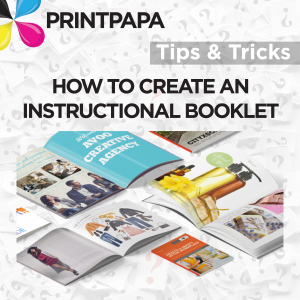Most products purchased these days come with instructional booklets. While brochures and catalogs help in selling a product, instructional booklets help the user understand how it works or gets puts together, making it a very important part of a product sale. Here are a few tips you should keep in mind when designing an instructional booklet:
- Logical Flow: A good instructional booklet should have a logical flow. As a designer your focus should be on the composition of the booklet. The flow should be logical where one step leads to the other. The overall outline should also bear the same flow. In an instructional booklet of an electronic equipment the Installation page should be put first followed by Setup and Troubleshooting.
- Be Precise: Getting to the point is key here! The language has to be simple since it needs to resonate with common clients. A reader should be able to understand what you meant on the first go. Writing long sentences can confuse a reader so its best to be short, sweet and concise.
- Index The Book: If your instructional booklet has many sections and sub-sections it should have an index. Make sure all the sections and sub sections are listed under the index which will make it easier for the users to find the solution they are looking for from the book.
- Sections Are The Key: The booklet should be well divided into sections as it makes reading easy. Do not cut any section short just to avoid going on to the next page.
- Use Illustrations: They are the most important part of any booklet. A single illustration is worth many lines of text which can relieve you from the pain of narrating every step. In most cases, people understand things better when they see how it works rather than reading about it.
- Troubleshooting: Your instructional booklet should have a page on troubleshooting if the product is electronic in nature. Many people take time to adjust to new equipment so the troubleshooting page helps in solving their problems.
A well designed instructional booklet should only be printed by a professional printer like PrintPapa. They have an excellent infrastructure with the latest machinery available in the printing industry. They have expertise in printing books, calenders, posters, catalogs and rack cards.


